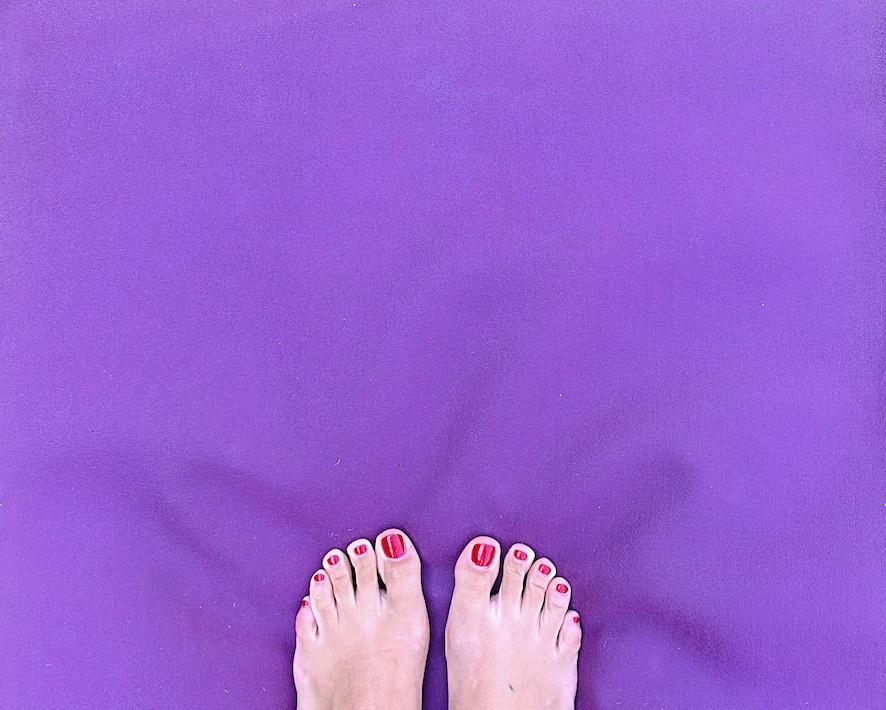The internet is flooded with information about yoga and its benefits: there are countless yoga channels on Youtube offering free classes and other countless yogis going upside down on your Instagram feed. If you’re a yoga purist, you might scoff at how hype yoga has become in recent years but one thing is certain, thanks to the internet and social media, yoga has never been so widespread and accessible.
So it was just a matter of time for yoga to start growing within the surfing community, especially with the likes of the nine-times surf world champion Kelly Slater endorsing the benefits of a regular practice.
But how can a strenuous and physically demanding sport like surfing have anything in common with yoga, a practice that seems to be on the opposite end of the spectrum? Read on to find out why surf and yoga are just the perfect match.
Yoga and Surf
Despite seemingly different, surf and yoga have many similarities. Both activities can be done in a group or in solitude and are very simple in nature because all you need is a place to practice and a surface to stand on.
Surfers and yogis also describe a similar experience in their practise: their senses become heightened, the focus is laser sharp and the individual returns to his/her natural state, moving as one with their surroundings which is usually referred to as a state of “flow”.
Like salt and water
Yoga is versatile so it can be a great muscle warm-up routine before you hit the waves, a soothing post-surfing cool-down session to reduce the chances of muscle soreness or the consolation during those dreaded flat days that will help you keep in shape.
If you’re practising yoga on the beach, there are already some huge benefits to the practice of yoga outdoors but here are some other reasons why yoga is an excellent
Flexibility
We’ve all seen plenty of bendy yogis that can easily twist to pretzel-like shapes whilst most of us can barely reach our toes so, I’m sure you can already guess that increased flexibility is one of yoga’s top benefits. Yoga stretches muscles and joints, loosens tight muscles, increases the range of motion and helps to reduce the risk of injury.
Breathing
In any exercise, it’s extremely important to learn how to breathe properly as our muscles demand more oxygen in order to work harder but, in yoga, breathing is a powerful tool that helps us deepen our practice. That’s the reason why yoga is likened to a moving meditation because it combines poses with conscious breathwork that helps us maintain our awareness in the present moment, access our inner state and alleviate any areas of tension.
Presence
Yoga invites us to surrender to the present moment becoming fully immersed in whatever we’re experiencing without getting lost in our own thoughts. Through being present, we get a glimpse of our true selves and our connection with something bigger. It’s something that can be particularly useful for beginners that feel slightly overwhelmed while learning how to surf and putting it all into practice.
Calm
An inner sense of calmness and tranquillity is another great benefit that you can reap through yoga practice. In between downward-facing dogs, well-being hormones are released and the parasympathetic system, which is responsible for digestion and relaxation, gets activated telling the brain that all is well in the body. Through consistent practice, this state of mental clarity becomes more easily accessible which will help you stay calm and collected even in challenging situations like when facing a big wave, for example.
Body Awareness
A yoga sequence consists of a series of repeated movements that become refined with each repetition. It’s through repetition that we create muscle memory and it’s through yoga that our attention starts to shift away from our heads to slowly tune us into our bodies. Once we become more mindful of our bodies abilities and limits, we learn how to work with it rather than against it. So even the slightest of the adjustments in a pose, like relaxing the shoulders or changing the drishti (focused gaze), can be felt because they make a significant impact on the whole body. This increased awareness is something that surfers can definitely take advantage of, from the newbies struggling to juggle the paddling, popping up and balancing on the board while trying to catch a wave to the more experienced surfer trying to hone their surfing stance.
Strength
Because yoga is usually portrayed as a relaxing activity, people tend to underestimate how tough a yoga class can be. I lost count of how many times I’ve seen new students, who probably thought they were just going to be lying around and stretching, finding themselves covered in sweat and gasping for air halfway through a class. Yoga uses the whole body weight and, by holding and repeating poses, it increases muscle strength and endurance that’s sure to come in handy when you’re out in the water paddling out or popping up on your board.
Focus
Focus is another vital part of surfing but it’s something really hard to maintain when our minds are scattered. As yoga works with different elements that help to increase focus, you’ll be more alert and in control, making surfing a much more enjoyable experience and less dangerous for yourself and others surfers.
Balance
Balance is the single most important aspect of surfing because, without it, surfing isn’t much fun. Stronger muscles, especially in the core, are intimately linked to better stability so practising balancing poses such as Vrksasana (tree pose) or Garudasana (eagle pose) will definitely help you get steadier on your surfboard over time.
Acceptance
One of the most valuable lessons in yoga is to accept things as they are because everything is in constant movement and changes are just an inherent part of life. What’s the point of beating ourselves up about things that are beyond our control? If your body feels a bit tighter or surfing conditions aren’t that great, yoga teaches us how to navigate through these unwelcome external circumstances with compassion instead of pushing through as we’d usually be tempted to do.
Attitude
Yoga’s more than just a physical practise that takes place over the course of an hour until it happens again. It starts on the mat but it permeates all areas of your life. Ashtanga, the eightfold path of yoga, provides sets of rules and guidelines on how to live a meaningful and purposeful life. Yamas, the first limb of this eight-limb path, are divided into five observances focused on ethical rules of behaviour. The five Yamas are Ahimsa (non-violence), Satya (truthfulness), Asteya (non-stealing), Brahmacharya (right use of energy) and Aparigraha (non-possessiveness). I’m sure you’d all agree that we always have room for improvement on how we conduct ourselves in the world and that includes when we’re out in the water too.
I really hope that, by now, I managed to convince you about the amazing benefits that yoga can help you with, in and outside of the water. So roll your mat out, get moving and, in no time, you’ll agree too that yoga and surf are indeed a match made in heaven.



